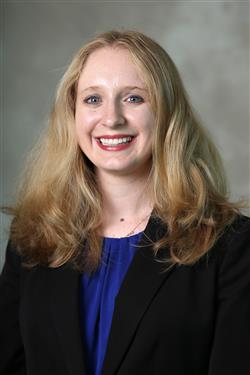It is a muggy Tuesday evening. Because it is Florida and it is summer, the impending storm promises no relief from the sticky heaviness that infuses the air. A line winds through the parking lot of a nondescript building. Children play under tents that offer paltry shade to their exhausted parents as they give their names to the students manning the reception table. Under another tent, bright posters and piles of flyers offer information on healthy diets and pesticide exposure prevention. Inside, organized chaos reigns. Rapid conversations tumble over each other, English and Spanish intertwining. Shouts for an interpreter are frequent. Volunteers in bright orange shirts serve piles of steaming rice and cold water bottles that leave rings on the tables. Every chair is filled, lining the walls and at tables where teams of students initiate rapid triage. It is sweltering in the room, and everyone is waving paper fans. In a corner, a mother rocks her baby, then hands him off to a volunteer so a nursing student can check her blood pressure. In another corner, dozens of black-shirted physical therapists sketch crude drawings of exercises on spare pieces of paper. There is a line of patients waiting for them. This community knows hard, back-breaking work.
A nearby room houses the dermatologist. His line is constant, children and adults alike. Just inches from his door, a medical student is trying to get the temperature of a squirming toddler. It is difficult because the heat in the room has made everyone flushed. Yet, despite the discomfort and the chaos, the emotion in the room is nearly jubilant. There is free food. There are supplies like sunscreen and Band-Aids to take home. And there is care.
The internist has two brightly-colored plastic tablecloths attached by clothespins to a rope across one side of the room for his exam area. People rush to his aid every few minutes as the make-shift screen pulls free. His line of patients grows, wrapping across the wall, through the triage tables, and past the ophthalmology room. The ophthalmologist ran out of space in his room ages ago, and the students are doing rapid eye exams next to the food tables, using hand-held cards and the lights from their cell phones. More students push through the crowds, guiding patients to the tables where an expectant team hears their concerns: a pain twinging, a lump felt, an odd rash. Yet more students weave through to the pharmacy, its windows looking out on the flood of patients. The pharmacists are pacing, making call after call in search of medications that the patients can afford. They call in favors and pull coupons from the internet, hand writing instructions on bottles of ibuprofen while they wait on hold.
In the back corridor, children are everywhere. School starts next month and it is time for annual exams. They hop across the room chasing a makeshift rubber-glove balloon as the pediatrician assess their gait and balance. A toddler wobbles between the knees of a medical student, thumb in her mouth as a social worker holds up objects to assess her development. There are so many children that the social workers and counselors have relinquished their room to the pediatric overflow. They are now holding whispered sessions in the corner by the restrooms, knee to knee with their patients, foreheads nearly touching. Other social workers have moved outside, abandoning the relative comfort of the air conditioning for a secluded corner under an awning at the edge of the parking lot.
The check-out desk is flooded with papers. Despite all preparation, the electronic medical record has slowed to a stand-still and patient records are being filled out in thick stacks of paper that are being manually entered by a harried student. Surveys pile up on the other side of the desk, the patients’ simple needs documented in the hopes that more resources can be found for this community.
Two hours before the clinic is set to close, the check-in desk has stopped accepting patients. Those still waiting have been given tickets to return later. The clinic has reached capacity, and it will take another hour at least to filter through the last of the patients in the building. More experienced medical students are called in to do quick exams on the long line waiting to see the internist and they cluster around the patients, interpreters rushing over to speed up the already rapid conversations.
The night is done. Exhaustion is clear in the set of the internist’s shoulders as he leans against the wall. The room smells of antiseptic as tables are wiped down. The student is still entering piles of patient records into the computer. Many of the volunteers scarf down granola bars, the first food they have had the time to eat for hours. Clinicians are on phones around the room, calling in prescriptions and filling the appointment slots of the free clinic in the next city, thirty minutes away, with patients needing more complicated care. How the patients will manage to make the long trip is still unknown. Two days later, this will all happen again. It has to. This community has been without a free clinic for years. And this is a community that cannot afford to have lost that support. There is work still left to be done.

